Beyond the Painted Desert, the northeast corner of Arizona is pretty much barren with wide valleys that aren't particularly scenic or pretty.
Most of the northeast is Navajo land, including the town we are in, Chinle. (pronounced chin-lee)
This comparatively little known canyon is not as spectacular as others in Arizona or Utah but it does have sheer walls rising up to 1000 feet with many scenic overlooks, many well-preserved Anasazi ruins and a look into the present day life of the Navajo Indians.
We woke this morning ready to face a new day. After a good night's sleep we were both in a better mood and ready to go sightseeing. We took our first showers as boondockers and I have to admit I'm not good at conserving water. I'm not a great fan of getting wet, shutting the water off, making use of soap and shampoo and then turning the water on to rinse. They call them Navy showers don't they? Well, I'm National Guard through and through and I want the water running the whole time. Oh this is going to take some getting used to.
Our destination today is just a few miles away, the Canyon de Chelly. (pronounced Can'yun duh shay)
Now I'm going to warn you right up front, there are a lot of pictures!
We decided to do the South Rim today, a sixteen mile drive with lots of overlooks to view the canyon.
Our first stop.....
Wow, what a view!
We noticed right away that there was a Navajo lady that was selling handmade wares from her car trunk.
We moved on to the next overlook and found even more Navajo's that had set up shop.
This lady's "studio" is in the back of her truck.
A close up of what she is doing.
She had a display of the pots she has already made spread out on the ground on a white sheet. The better to show the colors I would imagine.
It was here we met Darlene Sam, a soft spoken Navajo lady that took the time to explain the symbols on the pottery. Each squiggly line has a meaning and yet other symbols we could figure out for ourselves.
We bought this vessel she is holding as a souvenir of our time here on the Navajo Nation.
She also gave us a piece of paper that explains all the symbols in case we forget. Included on the paper was a paragraph or two explaining the culture, if you will, of the Navajo's. It reads as follows:
Our Navajo Culture makes us who we are, and creates the identities that give us meaning and purpose in our lives. Our grandparents teach us about hope. They also give us the strength to have faith when we are faced with troubles that make our lives difficult. Our culture shows us how to love and care through respect for others, our surroundings and ourselves.
Our culture was not created by us but by the holy ones who lived their lives before us. Our grandparents hold traditional culture for others. They gave us life and entrust us with their beliefs and traditions, so that their teachings will continue through us and so that our lives will have a path to follow.
The teachings are sacred and their purity is maintained through a balance of energies. Canyon de Chelly is a beautiful place and is surrounded by four sacred mountains. Within these sacred mountains is the home of our people.
Our view of the canyon at this overlook.
Today this canyon is much as it was when the first settlers appeared - prehistoric Indians called Anasazi - a Navajo word meaning Ancient Ones. Perhaps they were named that because the Navajo found only their villages, vacant and crumbling.
In the picture below you can see a large crack in the rock in the (just left of) center of the picture. It is only a matter of time, and water, that this rock will fall away.
There is a small section of the canyon that visitors can walk down to. The rest of canyon one must be accompanied by a Navajo guide as these are sacred grounds. Here are some hikers that walked the trail to the bottom of the canyon.
Here's today's entry for the dead tree picture. Like this one LaVon?
Remnants of the ancient dwellings of the Anasazi. It is thought that these dwellings were built in 1160 A.D.. Isn't it amazing that they are still standing?
Navajo families still live in the canyon today. Here is a picture of a "hogan". This is a structure that most Navajo's have today on their properties. Even in the town each home has a hogan, pronounced ho-gone. This is a building used for ceremonies. We were told that when a Navajo boy turns 13 he goes into the hogan with his elders for "vision" of what he is supposed to do with his life. It is an six sided room with doorway facing east to accept the morning sun.
This family is raising sheep.
I was most taken with how "swirly" the rocks are.
This is a picture of cliff dwellings. How in the world did they get to them?
I call this one black bird in gray sky. Wow....profound!
More swirly rocks.
The Navajo know this prehistoric Anasazi village site as Kinaazhoozhi, which means Sliding House. It is an apt description because the dwellings were built on a steep slope. Even the ingenious Anasazi builders were unable to keep the walls from slipping down the slope. Evidence suggests that this was a large village from 30 to 50 rooms. Occupation of the site probably began around 900 AD and lasted about 300 years.
A modern day home in the canyon.
More views of the canyon.
At one of the overlooks we met Rodney and Delroy, two young Navajo Indians. These cousins etch designs in the stone from the canyon and sell them to tourists.
Delroy took the time to explain to us what each design means.
They were so sweet and such good little salesman that we bought two small samples of their work.
At the overlook where these two were stationed we found this.
These are so handy because they are trained on what it is you should be looking at. Here's Bob checking it out.
Bob hanging out on the rocks.
I know I already have dead tree quota for today but I couldn't pass this one up.
This is Spider Rock. Legend has it that Spider Woman lives atop the 800 foot monument. She is one of the Navajo's most important deities and is the subject of many stories in the Navajo culture. In one of the stories about her it is said that she comes down at night and takes children who misbehaved during the day to the top of the rock and eats them. It is said that the light or white colored rocks at the top are their bleached bones.
Some more views of Spider Rock. Look at the difference in colors, it all depends on where you are standing I guess.
Yet another viewing and still different colors.
Some final shots of the canyon.....
My hangin' out on the rocks picture.
Back at the campground....our site.
We had our pizza for dinner and it was pretty good! We had the generator running so we had electricity and we watched some old John Wayne DVD's until quiet hours. We used the 12 volt lights afterwards and read until sleep came.
Hey this boondocking is pretty cool! I could get used to this, especially the FREE part. We've decided we could stay here for a week!
One thing we've noticed since we've been here is that Navajo families come to the park with LOTS of water jugs to fill from the spigots around the park. Evidently there is no running water in their homes. Even the smallest of toddlers carries an empty gallon milk jug to be filled. There is a steady stream of families coming in and out of the park for water.
I can't wait to see what tomorrow brings!

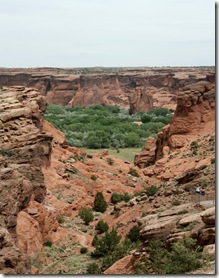
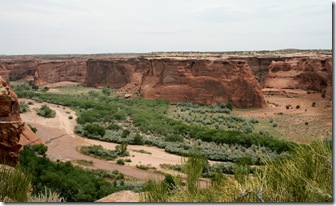
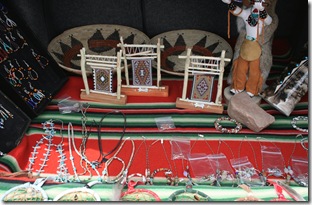
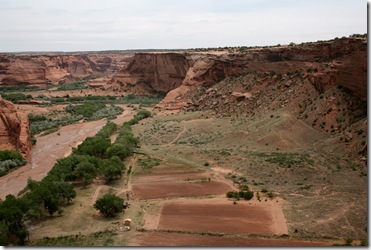
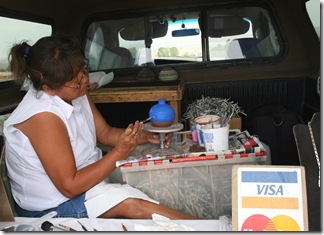

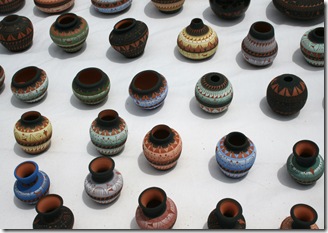
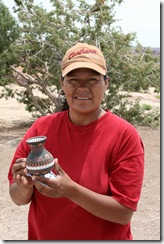
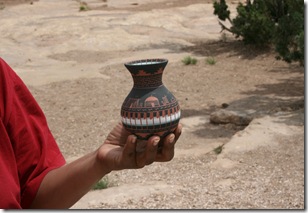
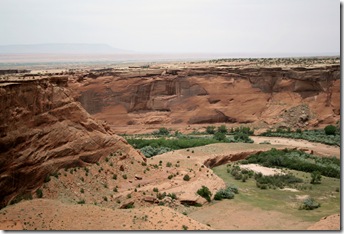

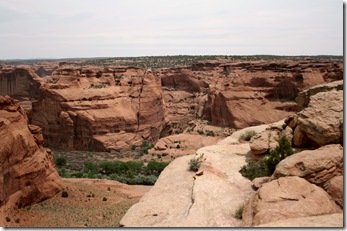
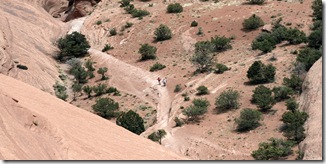
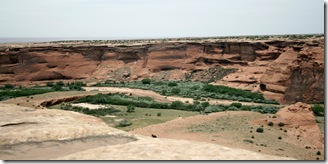
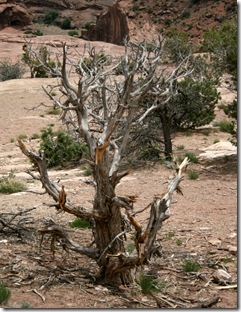

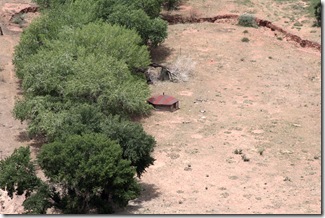
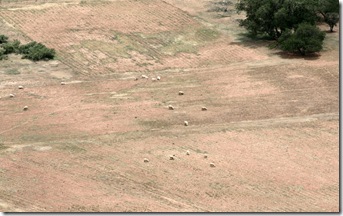
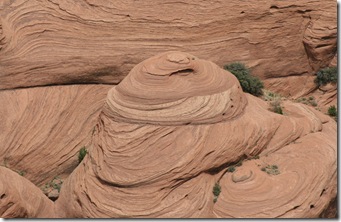
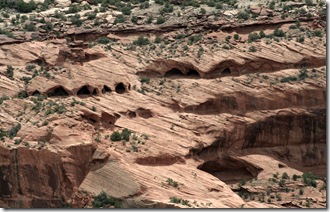

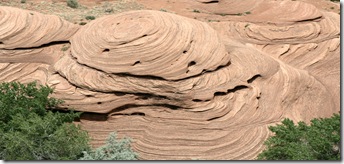
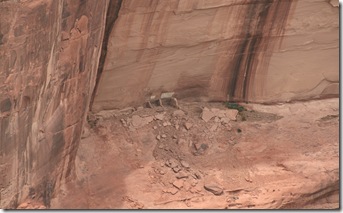

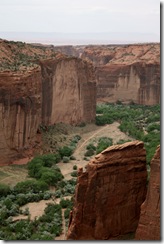
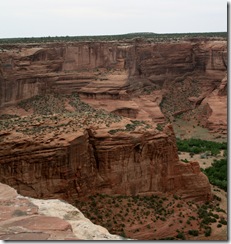
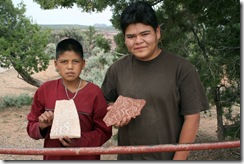
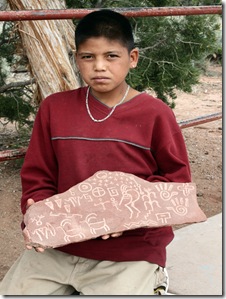
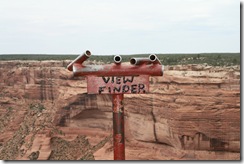
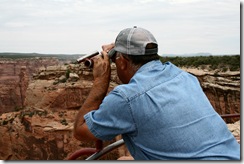
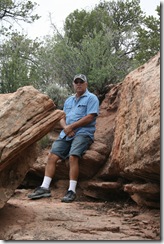
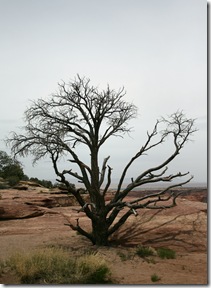

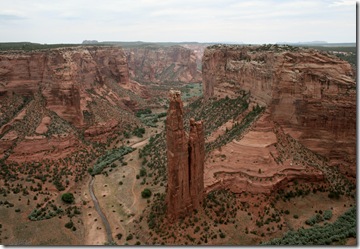
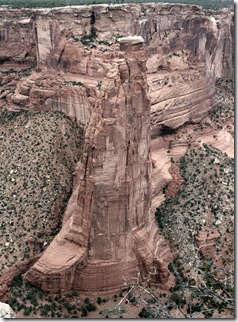

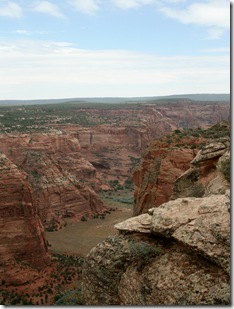
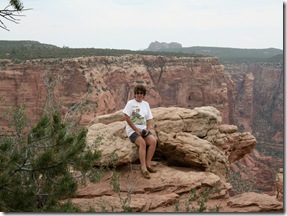

No comments:
Post a Comment